
The British Antarctic Survey are currently recruiting Field Guides to join their work in Antarctica. To give you a taste of what life there is like, Ian Hey writes about his experiences.
Rothera Research Station from Reptile Ridge with the peaks of the Antarctic Peninsula across the Lauberf Fjord in the background. Photo Ian Hey"The sun was shining as I walked across the open ground to the bright red DASH 7 aircraft waiting on the runway in Punta Arenas. BAS's chief pilot greeted us at the foot of the steps to the aircraft and welcomed us aboard. Within a few minutes we were out over the water above Tierra del Fuego and bound for BAS's Rothera Research station on the Antarctic Peninsula and the start of my 18-month contract as a Field Guide. My stomach was filled with butterflies, I'd never even sat on a Skidoo let alone driven one, or done any vehicle maintenance, or travelled over sea ice; could I really do this job?"
Every year the British Antarctic Survey employs a number of Field Guides (FGs) to assist in the support of its science programs on the Antarctic continent. Two types of contracts are normally offered. Summer only contracts up to 8 months long and wintering contracts of 18 months.
"The 18-month contract is brilliant" says past FG, Tom Weston, "by the second summer you have a chance to refine and put into practice all of the new skills you've learnt over the first 12 months. So good that I stayed for another 12 months!"
Kirk Watson having done both types of contract had this to say about the difference between the two.
"Doing a short contract, it is great fun but you feel like a visitor, a kind of working tourist. When you do an 18-month contract suddenly you are moving to Antarctica and you live there. This changes everything and you feel you belong there and the base becomes your home rather than a long stay hotel".
If you are lucky to be accepted before you know it, your bags are packed, goodbyes have been said, and then soon after you find yourself looking out of the aircraft window at the icebergs and glaciers as you come in to land at Rothera, your new home.
The first few weeks are a pretty intense period of training. Linked skidoo travel, operating HF radios, how to refuel aircraft in the field. There is a lot to learn and it feels pretty daunting.
Linked skidoo travel training for new FGs close to station. The skidoos and sledges are joined by 10m link lines in much the same way as a pair of alpine climbers link themselves with rope when crossing a glacier. The driver is also attached to the vehicle by a shock absorbing line. If the first skidoo were to fall into a crevasse the sledge and skidoo behind should hold the fall. Here FGs learn the basics in a non-glacial area. You would not travel in such poor weather on a glacier area as you would be unable to see the crevasses. Photo Ian HeyScience project support.
Perhaps what most people think about when they hear of the FG role is the support they offer to science projects. You are assigned to a project that can be between 2 weeks and 3 months long. It might be a large static camp with a dozen people or just you and 1 scientist travelling every day. You'll get plenty of chance to assist with the science but you'll also be busy giving weather observations, make daily radio scheds and, of course, constantly melting snow for water and digging to clear tents and vehicles after blows. Typical projects include ice core drilling, seismic and radar work, wildlife studies and geology projects.
Tom Weston was lucky to work on a geology project in his second summer and had this to say about the trip
"We were camping at 70 degrees south on the Antarctic Peninsula, 24hour day light and a mix of calm anticyclonic weather and brutal 40-knot winds. We were camped at 1000m above sea level and most of the peaks topped out at 2000m. A fine mix of classic ridges and rocky buttresses. A typical day involved linked snow mobile travel to base of the peak, then standard roped glacial travel to the ridge to be climbed. Once on the mountain Teal the geologist would examine the rock types and collect samples. A traverse via the summit was mandatory. Back down the mountain and return to the tent to melt snow for tea and dinner, ready for another first ascent the following day."
Taking a rock core sample from a peak in Horeshoe Valley in the Ellsworth Mountains during a geology project. The samples were cosmogenically dated to establish how long the rock has been ice free. As well as personal kit and the 40kg drill it was also necessary to carry 40 litres of antifreeze to the summit to lubricate the drill. Photo Scott WebsterI find it's not possible to be involved in this type of work without thinking about Climate Change and global warming. I've visited South Georgia and seen a glacier that was retreating at over a metre a day and been involved in a seismic project on part of the West Antarctic Ice Sheet which is melting more rapidly than the models predict and is likely to be the single greatest contribution to global sea level rise should it continue. Ali Rose also had a powerful experience.
"The magnitude of the task in doing world class science in Antarctica truly baffled me in my first season. Seeing how much fuel and equipment was needed for even simple projects was astounding and really made me understand how much effort was going into understanding the natural environment. I never had any doubts about climate change being "real" but if I had I think they would have been blown out of the water in the first week."
Left: Fresh baked bread from a stove top oven, while the data processing continues, during a 2-month weather and atmospherics project on the Larsen Ice Shelf. Photo Ian Hey. Right: Instrumentation recording solar energy on the Larsen Ice Shelf. Photo Ian Hey
Other FG tasks
Aside from the science support there are plenty of other opportunities and work to keep you busy.
"You'd be a fool to not mention co-piloting a twin otter of course, that's just frickin' awesome " said FG "Taff" Raymond.
Left: Getting to take the controls of a Twin Otter while the pilot completes the necessary in-flight paperwork. Photo Ian Hey. Right: Refuelling the aircraft at Fossil Bluff on Alexander Island. The fuel is pumped from 205lire drums using a spate pump. Its important to check each drum first with a special water finding paste. If there is any water in the fuel (possible by condensation or the drum being damaged), then that fuel must not be used for the aircraft. Photo Ian Hey.
BAS operates 2 summer-only field stations on the continent. Each of these needs a manager for the season and FGs normally take it in turns to do a few weeks each. The network of fuel depots used to refuel the aircraft needs to be raised every year or they disappear under fresh snow. It's on jobs like this that you'll become well acquainted with a FGs favourite tool. A shovel! BAS now also puts fuel into the field by airdrop from military Hercules aircraft. You hope that the pilot has his coordinates right and the drums don't land on your head! Then starts the physical work of rounding up the 200kg drums and parachutes. You'll likely spend some time back on Station. You'll get to sleep in your own bed and have a shower, but you will be kept just as busy putting new arrivals through Field Training Modules or giving up your weekends to teach folk to ski.
Basic living accommodation at Sky Blu – the summer only blue ice runway used as a staging post for deploying field parties further south. Photo Ian Hey Making your own entertainments during some rare down time during bad weather at Sky Blu. Photo Ian HeyAnother recent development is the use of a Tractor Traverse to move bulky cargo and fuel, long distances across the continent by Pisten Bully machines. James Wake is currently involved in a multi-year collaboration with the US Antarctic program.
"I really enjoy the logistics side of things having come from an industrial rather than instructing background. Tractor traverses deliver the bulk of the fuel and equipment that supports the larger field projects. As a mountaineer travelling on foot through crevassed terrain is well within your comfort zone but making sure a route is safe for a Pisten Bully tractor with a 50-ton sledge is another.
Over the years you gain a lot of expertise, and there is much more to it than shovelling. You learn to develop an understanding of ice shelves, sheer margins, sea ice and other polar novelties. You learn to use other tools like satellite imagery and ground penetrating radar.
Satellite imaging allows you to do a huge amount of preparation in advance. As well as visual imagery showing surface features some imaging lets you see sub surface crevassing, and a host of other potential headaches.
Ground penetrating radar uses a radar device attached to a skidoo travelling ahead of the tractor train and helps you to see what's happening under the surface in real time. It calls for great concentration from the operator, following a GPS track, keeping a visual on the ground ahead and the tractors behind, while constantly scrutinising the radar trace for signs of crevassing that would necessitate a change of route. It's a great addition to the core skills of putting a rope on and poking with a stick!"
Tractor Traverse on the Rutford Ice Stream with the Ellsworth mountains behind. The first Pisten Bully is pulling the caboose used as living accommodation followed by 2 sleds with fuel bladders. Photo Tim GeeFor most Traverse work a ship will be used to put the hundreds of tonnes of cargo and fuel ashore at the closest suitable coastline.
"Coastal offloads are one of the best things I've done with BAS". Says James.
"Just two of you driving up to the edge of an enormous ice shelf with the sea filling the horizon. Then dropping down into a rift in the shelf onto the frozen ocean to finally get a chance to assess a site you've been examining by satellite for the past six months".
"It needs a whole host of skills to prove a safe mooring site and find a suitable route up to the relative safety of the shelf for tractors and their heavy loads.
It's a lot of pressure; the offload is essential for several major field projects, and if the site isn't workable the nearest alternate is on the other side of the continent. On the flip side that pressure can't force you into a poor decision that puts people and kit at risk.
Once you've made the call it's safe, the ship appears and the place is swamped by people, tractors & aircraft. Followed by a frenetic 10 days getting all the fuel and cargo ashore.
Then it's a bit eerie when there's just the four of you stood underneath the bow of the ship as she casts off and leaves you all alone".
The now retired BAS ship Ernest Shackleton alongside sea ice on the Abbot Ice Shelf about to start unloading cargo. The "Shack" has now been replaced by the polar research vessel the Sir David Attenborough which will be making its maiden voyage south in 2021. Photo Scott Webster One of the locals showing up to help with unloading. Photo Ian HeyThe waiting game!
With Antarctica comes a reasonable share of bad weather. This means a fair amount of sitting and waiting. You could find yourself in a tent for days or even weeks at a time. There will always be jobs to do but the ability to sit and entertain yourself with limited resources without annoying your tent mate or letting them annoy you is a high importance.
My partner and I once sat out a 48-hour storm without leaving the tent fearing that it could be destroyed at any moment. When we finally emerged as the winds dropped, we discovered that our skidoos weighing 350kg each had been rolled and blown 200m from camp.
Left: Never be far from your shovel! Sitting out bad weather. Photo Ian Hey. Right: One of the skidoos damaged during the ferocious storm. Photo Ian Hey
Necessary skills
Just as suddenly as the weather can deteriorate so it can suddenly improve, which means adaptability is key. If you can accept having your plans repeatedly changed only to have them changed yet again at very short notice then maybe it is the job for you. So just what other skills make a good Field Guide? Scott Webster who did several years as a FG before going on to work with other commercial organisations in both the Arctic and Antarctic put it like this.
"Advanced mountaineering skills are the foundation required to be a Field Guide in Antarctica but of equal importance is your ability to work effectively and get along with a diverse group of people in challenging situations. The most accomplished mountaineer isn't necessarily going to be the best field guide as it's often your ability to make decisions based on other people's abilities, rather than your own that is important. Although not essential, an instructional background is advantageous in this regard."
Left: Digging the Twin Otter's skis out on the Avery Plateau at around 2000m while looking for a site for to place a weather station to examine the changing wind patterns around the Antarctic Peninsula. We got bogged in and were unable to get airborne again. After several failed attempts, the pilot ordered the rest of us into the very tail of the aircraft to help produce more lift. Photo Ian Hey. Right: Raising instruments placed a couple of years earlier, on the Rutford Ice Stream, before they get buried by snow accumulation
Winter
Before you know it, the summer staff have all left and it's just you & your small cohort of fellow winterers. The hectic summer pace slows down the days get shorter and you have more time to yourself. Work revolves around lots of indoor maintenance tasks.
"During the winter spare time is unlike spare time at home. You can do so much with it. While at home you have to cut the grass, chop logs, meet your accountant, visit the family, go shopping, etc. In Antarctica this is all gone and you have actual real free time with no guilt which is amazing!" says Kirk Watson
Many use this opportunity to learn new skills. Teach themselves a musical instrument and join the winter band or get in the chippie shed and develop their woodwork skills.
Hopefully you'll get some cold settled weather, the sea will start to freeze and you'll learn how to test and explore the sea ice. Be sure to grab every opportunity. One strong blow from the wrong direction and the ice can vanish overnight.
Field Guides journey onto the sea ice and drill through to water then measure the thickness of the ice to see if it is safe for general travel. A Minimum of 20cm is required for a person on ski, 25 cm for a person on foot and 30cm for a skidoo. Photo Ian HeyFor many the winter training trips are the highlight of a wintering contract. As FG you get to take each of your new family on a 1-week trip to explore what Adelaide Island can offer. Most of your wintering team will never have seen crampons before so picking sensible objectives is key. You won't be doing anything hard or technical but the remoteness and uniqueness of the environment more than compensate.
A man-hauling trip on skis in the Stokes Range on a winter training trip. Photo Scott Webster Crevasse exploration with a fellow winterer. Photo Ian Hey Still enough light to grab a quick ski close to station even in winter. Photo Ian Hey The originally named "Window Gully" at the South end of Adelaide Island. Photo Ian HeyBy the end of winter you've hopefully cemented friendships that will last a lifetime. The winter-trips have given you the confidence that you know how to look after yourself and you now feel comfortable with all the equipment that only a year ago you had never seen before. As People arrive back on station, you notice that in planning for your next project, in place of the mild panic and anxiety of your first summer you are now calmly busying yourself with the endless preparation tasks. You are excited and looking forward to getting out in the field again.
Summer mountaineering on Leonie Island at the start of my second summer. This route was accessed by boat from station which can be seen on the headland of sunlit rock above the left-hand climber. Photo Ian Hey.What comes after?
There's an old saying in BAS that you go south the first time for the experience, the second time for the money and the third time because you don't know what else to do with your life! Having now done more than 3 times I think of it differently. My time in Antarctica is very real and it's far easier to be fully present in the moment that it is at home. You get back to a more basic existence, the need for food, shelter and the company of others. The work and science that people are carrying out down there is vitally important to the understanding of our plant and possibly even the survival of our species.
For many people once is the experience of the lifetime and they don't ever wish to come back, but for others the wild places get under the skin and whether they continue to work for BAS or not many FGs go on to work in a wide variety of roles that they would not have considered without that first trip South.
"In the spare time during my first winter I learnt to make and edit films, which led to making films for BAS. I have now turned that into a whole new career working in television and film"; said Kirk Watson "I did not see that coming!"
Tom went on to work for a commercial operator in Antarctica after leaving BAS
"I have guided climbers on Mt Vinson the highest peak on Antarctica, skied to the South Pole, and driven across the continent twice"
While having returned from his first FG contract in mid-2020 Taff said,
"It re-lit my fire for gaining qualifications in the outdoors, we got back during the wonderful Covid lockdown, so I haven't done much since my return, but I have, finally, booked my MCI and WML assessments and am keen to work for BAS again".
Whether the job is for you is a personal decision. One bit of advice I'd give is to consider any other important people in your life, and those you leave behind. Scott Webster has some broader advice
"Working as a FG is without doubt one of the highlights of my life! The opportunities and experience gained have proven invaluable. The best bit of advice I could give is do it – you will not regret it, but you might regret not doing it! Along with this advice I feel it's important to encourage anyone thinking of applying to find out as much as they can about the role beforehand. It's easy to see photographs of the glamorous aspects of the job and build up a false picture in your mind of what it entails. At times the job is downright hard work and it isn't for everyone. Get in touch with people who have done the job and ask about all of the aspects – good and bad! "
For me I loved my first time south, despite having left and done other things since, I keep being drawn back. Each time I go I learn new skills and make new friends. I don't see why I wont keep heading back for years to come.
A much-needed wash. This Zarge box was the container we melted snow in for the hot water drill used to melt bore holes in the glacier to put explosives in for the seismic work being carried out. Once we'd finished making the holes Andy the lead scientist let us use it to take a shower in. Our only proper wash in 3 months! Pine Island Glacier West Antarctica. Photo Ian Hey Travelling approximately 300km from Pine Island Glacier to Castle Depot with a living unit and radar sledge. To get a good radar record we could not drive faster than 15km/h. On the best weather day so far, the gearbox on one of the skidoos seized and we could go no further. Amazingly just 2 days later we had been delivered a replacement vehicle and were on our way again, only for a storm to then pin us in our tent for 7 days. With a big 18-hour day to get back on track and the destination almost in sight we were given just two hours notice of our pickup, due to more incoming bad weather. Photo Ian Hey. The author after a long day skidooing in cold temperatures. Photo Ian HeyThe BAS are currently recruiting Field Guides for their work in Antarctica. Fancy living the life that Ian's described? You can find out more and apply here.
This video gives a snapshot of the BAS and the work they do:




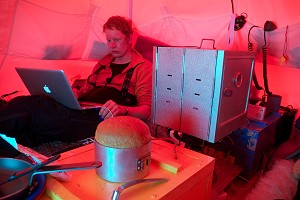
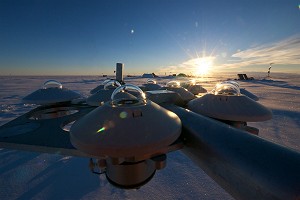
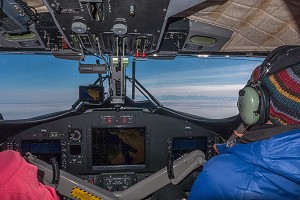
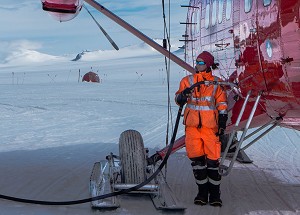




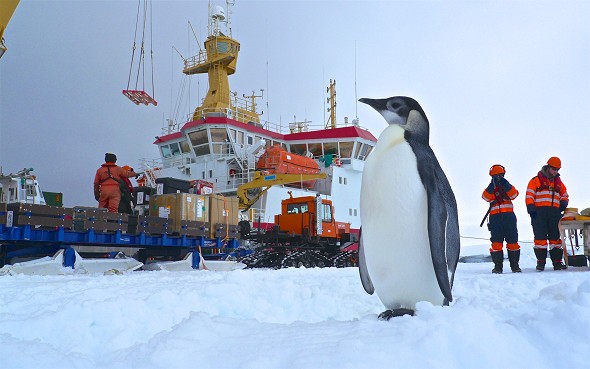
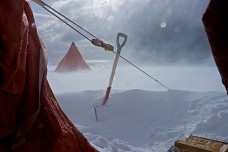
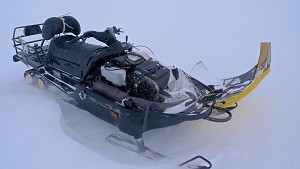
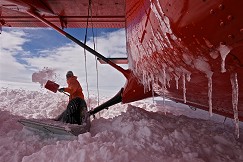











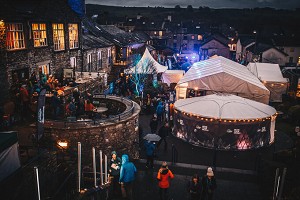

Comments
If only I was a youngster and single again, what an opportunity. I had a mate go down for 3 winters in the 70's and he became an expert dog handler. So much so that he then did the famous Alaska dog-sled race. Made a change from teaching 5c in a Manchester inner-city company!
Excellent read btw.
I dont think I want to read this... it will only make me very jealous!
Nice one Ian; a good read. Hope to see you soon. Wonder if Pabbay or something similar might be a goer this year?
Amazing read Ian! I've been looking at work with the BAS for a few years now! This just makes me even more certain.